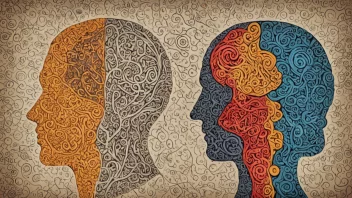Introduction
Bullying is a pervasive issue that affects individuals and communities across various settings. In this article, readers will learn about the effects of bullying on social dynamics, including how it influences relationships, self-esteem, and group behavior. We will provide a step-by-step guide to understanding these effects and offer strategies for addressing bullying in different contexts.
Step 1: Recognize the Different Forms of Bullying
Bullying can manifest in several ways, and recognizing these forms is crucial to understanding its effects. Here are the main types:
- Physical Bullying: Involves harming someone physically or threatening to do so.
- Verbal Bullying: Involves name-calling, insults, or verbal threats.
- Social Bullying: Involves damaging someone's reputation or relationships through exclusion or spreading rumors.
- Cyberbullying: Involves using digital platforms to harass or intimidate someone.
Step 2: Understand the Psychological Effects
Bullying can have deep psychological impacts on individuals, which can affect social dynamics. Consider the following effects:
- Low Self-Esteem: Victims often feel worthless and may withdraw from social interactions.
- Anxiety and Depression: Bullying can lead to mental health issues, impacting one's ability to engage socially.
- Fear of Social Situations: Victims may avoid places where bullying occurred, limiting their social interactions.
Step 3: Analyze the Impact on Group Dynamics
Bullying doesn't just affect individuals; it can alter group dynamics significantly. Here’s how:
- Increased Conflict: Bullying can create tension among group members, leading to conflicts.
- Decreased Cohesion: Groups may become divided, with some members supporting the bully and others siding with the victim.
- Altered Power Structures: Bullying can reinforce negative power dynamics, where bullies gain influence at the expense of others.
Step 4: Promote a Positive Environment
Creating a positive environment is essential for mitigating the effects of bullying. Here are some strategies:
- Encourage Open Communication: Foster an environment where individuals feel safe discussing their experiences.
- Implement Anti-Bullying Policies: Establish clear rules and consequences regarding bullying behavior.
- Promote Empathy: Engage individuals in activities that encourage understanding and compassion for others.
Step 5: Educate and Empower Bystanders
Bystanders play a crucial role in addressing bullying. Here’s how to empower them:
- Teach Intervention Strategies: Educate bystanders on safe ways to intervene when they witness bullying.
- Encourage Reporting: Motivate bystanders to report bullying incidents to authorities.
- Foster Allyship: Create programs that encourage bystanders to stand up for victims.
Step 6: Support Victims of Bullying
Providing support to victims is crucial for their recovery and reintegration into social settings. Consider these approaches:
- Listen and Validate: Offer a listening ear and validate their feelings.
- Encourage Professional Help: Suggest counseling or therapy to help them cope.
- Involve Parents and Educators: Engage their support network to create a comprehensive support system.
Conclusion
Bullying has significant effects on social dynamics, impacting individuals and groups alike. By recognizing the different forms of bullying, understanding its psychological effects, analyzing its impact on group dynamics, promoting a positive environment, empowering bystanders, and supporting victims, we can create safer and more inclusive communities. Remember, addressing bullying is a collective effort that requires awareness, education, and empathy.






